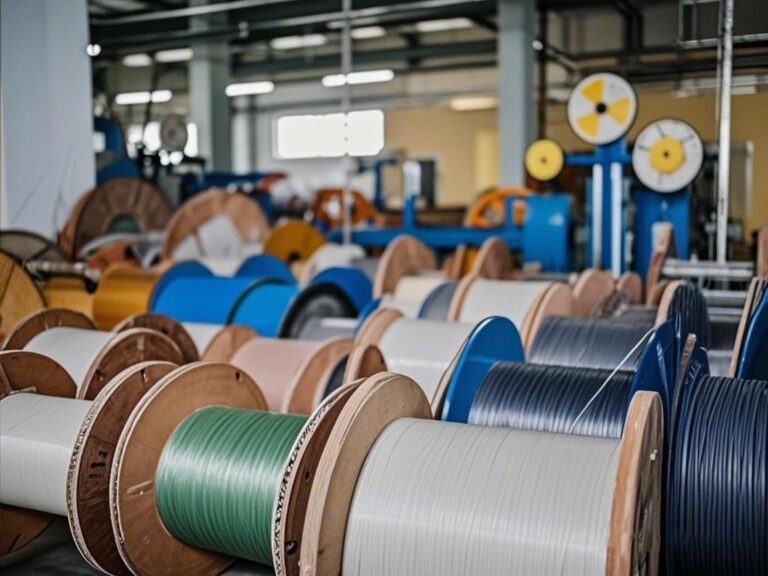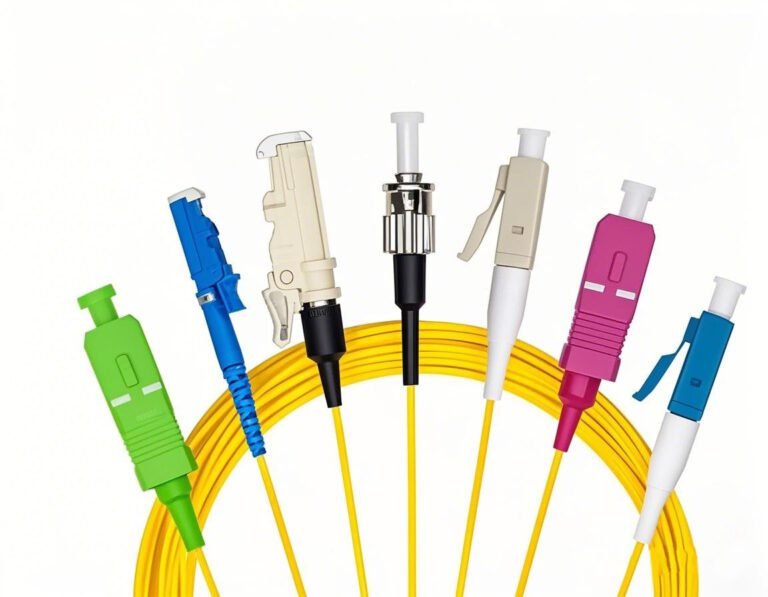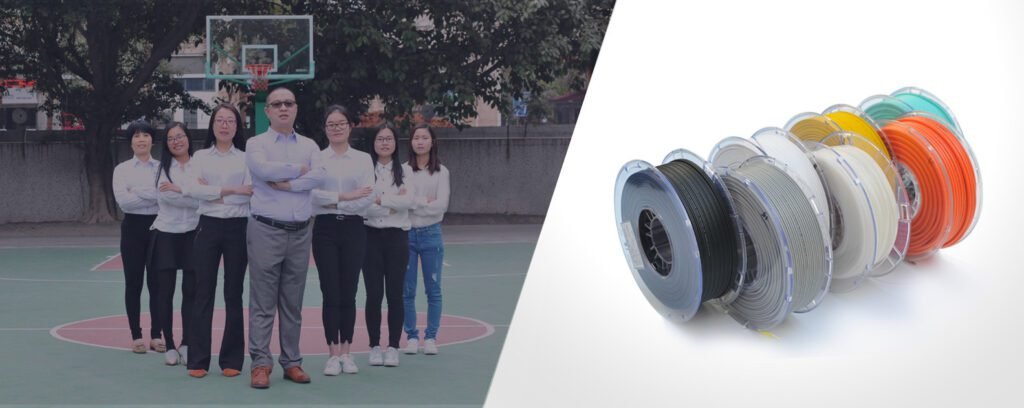How Do You Choose the Right Fiber Optic Cable Connectors and Accessories?
In today’s rapidly evolving telecommunications1 landscape, selecting the right fiber optic cable connectors and accessories can be daunting. The vast array of options can lead to inefficiencies and increased costs. Fortunately, understanding the different types and their applications can simplify the decision-making process.
Choosing the right fiber optic connectors and accessories involves understanding the types available2, core and cladding sizes, performance, compatibility, and installation ease. By aligning these factors with your specific needs, you can ensure efficient and reliable fiber optic connections tailored to your application.
Imagine setting up a high-performance data center3 only to realize your connectors are incompatible, causing delays and increased costs. This scenario highlights the importance of selecting the right fiber optic connectors and accessories from the start. Let’s explore how to make informed decisions for your fiber optic needs.
What Are the Types of Fiber Optic Connectors?
Fiber optic connectors play a pivotal role in ensuring the seamless transmission of data across networks. Knowing the types and their specific applications is essential for choosing the right connector for your needs. Let’s delve into the various types commonly used in the industry.
Fiber optic connectors, such as ST4, SC5, [LC]https://connectorsupplier.com/what-are-lc-connectors/)[^6], FC, MPO, and MTP, each serve specific applications. ST connectors are reliable for telecommunications, SC connectors offer robust connections for data centers, and LC connectors excel in high-density environments. Understanding these types ensures optimal performance for your network.
Each fiber optic connector type has unique features that suit different applications. The ST (Straight Tip) connector, with its bayonet mount, is favored for its reliability in telecommunications networks and LANs, despite its declining usage in new installations. The SC (Subscriber Connector) is known for its push-pull mechanism, providing stable connections in data centers.
Common Connectors
- ST (Straight Tip) Connector: Utilizes a bayonet mount and 2.5 mm ferrule for ease of use in telecommunications networks, though less prevalent in new setups.
- SC (Subscriber Connector) Connector: Ideal for data centers due to its robust push-pull locking system.
- LC (Local Connector) Connector: Perfect for high-density environments, offering stability and speed.
- FC (Ferrule Connector) Connector: Uses a screw-on mechanism, suitable for single-mode applications6, often found in legacy systems.
- MPO and MTP Connectors: Support multiple fibers, vital for high-density applications like data centers.
Other Connectors
- MT-RJ, MU, E2000, and others: These connectors cater to specialized needs, such as high-density data center applications (SN connector) or adherence to specific standards (DIN connector).
Why Are Core and Cladding Sizes Important?
Core and cladding sizes significantly impact the performance of fiber optic cables, influencing data transmission efficiency over various distances. Understanding these sizes is crucial for selecting the right fiber optic solution for your application.
Single-mode fiber7 uses a 9/125 µm connector8 for long-distance data transmission, while multimode fiber employs 50/125 µm or 62.5/125 µm connectors for short to medium distances. Choosing the correct size ensures efficient data transfer.
Single-mode fibers, with their 9/125 µm connectors, are designed for long-distance communication, minimizing signal attenuation9 over extended spans. In contrast, multimode fibers, available in 50/125 µm or 62.5/125 µm, excel in short to medium-range applications, offering cost-effective solutions for local area networks.
What Factors Should You Consider When Selecting Connectors?
Size and Space
The physical size of connectors affects their suitability for different environments. Compact connectors maximize space efficiency, crucial for high-density installations.
LC connectors are ideal for limited spaces due to their size, while SC connectors offer robustness where space is less constrained. Selecting the right size ensures optimal use of available space.
Performance
Performance is key in choosing the right fiber optic connectors, with factors like signal integrity and transmission speed being critical.
Both LC and SC connectors provide excellent signal integrity and transmission speed. LC connectors are known for their stability, while SC connectors ensure reliability across diverse settings.
Compatibility
Ensuring compatibility with existing network equipment10 is vital for seamless integration and functionality.
LC connectors are prevalent in modern data centers, offering widespread compatibility. SC connectors provide broader compatibility but may require more space for installation.
Ease of Installation and Maintenance
The ease of installation and maintenance can significantly affect the efficiency of network setups and ongoing operations.
Connectors with simple coupling mechanisms, such as the ST or SC connectors, offer easier installation and maintenance, reducing setup time and operational disruptions.
What Are the Essential Fiber Optic Accessories?
Fiber optic accessories play a crucial role in managing and optimizing fiber optic connections. Understanding essential accessories ensures efficient network performance and maintenance.
Essential fiber optic accessories include splice trays, splitter modules, patch plates, attenuators, and cleaning tools. These components ensure organized, efficient, and high-performance fiber optic networks.
Fiber splice trays and splitter trays are vital for organizing and managing fiber splices and splitters, enhancing network reliability. Splitter modules, available in various configurations, divide optical signals efficiently. Patch plates and bulkhead adapters facilitate cable management within enclosures, while attenuators adjust signal strength to prevent receiver saturation.
Essential Accessories
- Fiber Splice Trays and Splitter Trays: Essential for organizing fiber splices and splitters.
- Splitter Modules: Available in configurations like 1×4, 1×8, 1×16 for effective signal distribution.
- Patch Plates and Bulkhead Adapters: Aid in cable management within enclosures.
- Attenuators: Adjust signal strength to prevent over-saturation.
- Cleaning Tools: Ensure proper termination with lint-free cloths and inspection microscopes.
Additional Considerations
- Compatibility with Existing Equipment: Ensure accessories fit with current setups.
- Industry Standards: Choose accessories meeting standards for low signal loss and reliability.
Conclusion
Selecting the right fiber optic cable connectors and accessories is a critical process that involves understanding the types of connectors, core and cladding sizes, and various performance factors. For telecom engineers and product managers, making informed decisions ensures reliable and efficient network setups. Consider the space, performance, compatibility, and ease of installation when selecting connectors. Additionally, the right fiber optic accessories, such as splice trays, splitter modules, and cleaning tools, play an indispensable role in maintaining optimal network performance. By evaluating these factors, you can tailor your fiber optic solutions to meet specific application needs, ensuring robust and cost-effective telecommunications infrastructure.
Understanding the telecommunications landscape is vital for making informed decisions regarding fiber optic products. ↩
A detailed explanation of the various types of fiber optic connectors helps in selecting the right type for specific applications. ↩
Provides information on why high-performance data centers require certain specifications and ensure efficient network functionality. ↩
Understanding the uses and ongoing relevance of ST connectors is important for decision-making in network environments. ↩
SC connectors are valued for their robust connections; information about them aids in selecting the right connector for data centers. ↩
Single-mode fiber applications are essential for long-distance transmission, and the appropriate connector ensures the success of the system. ↩
A comparison of single-mode vs. multimode fibers helps in selecting the optimal fiber for various distances and use cases. ↩
Details on 9/125 µm fiber optic connectors clarify their use in long-distance fiber optic networks. ↩
Understanding signal attenuation and its impact ensures more effective fiber optic network design and performance. ↩
Compatibility with network equipment ensures that all components work seamlessly together, improving network reliability and efficiency. ↩










